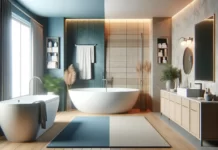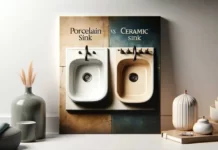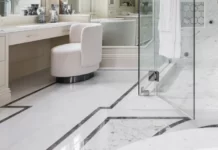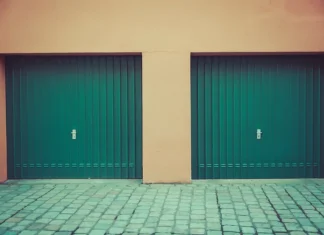Whether you revamp your bathroom or give a head-to-toe makeover to your kitchen, you might stumble across one question. “How many tiles do I need?” to plan out your investment and budget, you must first know the quantity to make a fool-proof decision.
Whether you’re planning to install your tile floor or simply doing construction takeoffs, you can determine how many tiles you need. The steps are the same, even if it is a wall project instead of a floor.
With an estimating tape and some mental math, you can gauge the number of tiles you need and how much the whole remodeling project will cost you. This article is here to help simplify estimating your tile area for the bathroom and kitchen!
Supplies You’ll Need:
Begin with four things in your hands: Paper, a pen or pencil, A measuring tape, and a calculator. The calculator is optional. If you don’t have it on you, then it’s alright; the math you are required to use is basic and straightforward, so don’t worry.
If you measure in feet, it’s this easy. If you measure in inches, you’ll have to divide each measurement by 12 before multiplying to get the square footage.
Instructions to Calculate how many tiles You’ll Need
This errand can be not tricky to overcomplicate, yet entirely it’s essential! The following are five stages to estimating your tile region:
- First off, the length of one side of the room is measured. If it is a divider project, measure the divider’s size.
- Proceed with measuring the length of the opposite side of the room. If it is a divider project, measure the divider’s size running from left to right.
- Duplicate both estimations to have a rough idea of the area you will be working on. For instance, on the off chance that the room estimates 10 feet wide by 12 feet in length, duplicate ten by 12. The area of this room is 120 square feet.
- Interpret the area to how many tiles you want. Tile ordinarily comes in boxes, and you need to purchase the entire bundle. Partition the absolute space of the room by the all-out area of the tile in the container. In our model, each pack contains 10 square feet of tile. So assuming you want 120 square feet, ten goes into 120 12 times, so you’ll have to purchase no less than 12 boxes.
- Compute the overage you’ll require. You ought to never purchase how many tiles you want since you likewise need a piece extra for cuts, waste, breaks, and slip-ups. Increase the room’s area by 10%, then add this add up to the absolute square of the room. Presently, this is the aggregate sum of the area you ought to purchase. To go on with the model we began over, .10 x 120 = 12, and 120 + 12 = 132. We’ll require 132 square feet of tile.
One more motivation to purchase extra is on the off chance that the style or variety isn’t accessible any longer and you want to supplant a wrecked tile or two; you will require additional items close by to make the fixes. If you don’t, then to fix it, you should supplant the whole floor. The point is to spend somewhat more forthright to set aside cash over the long haul.
People May Ask
- What number of square feet of tile arrives in a container?
Most boxes hold 10 square feet, yet take a look at your bundle to guarantee.
- What number of tiles will I want?
Partition the whole area you want by the sum remembered for the container of tiles. If you wish to 165 square feet, and each container holds 10, partition ten into 165: You’ll require 16.5 boxes. So purchase 17! Or, on the other hand, 18, no doubt.
- Consider the possibility that I Want to Lay the Tiles Diagonally.
For tiles laid at a 45-degree point, the overage or waste variable will be more prominent, so purchase extra.
Final Words
A decent guideline is to purchase an additional tile box for good measure. Keep the tiles away to ensure that you can easily access them if it breaks and needs to be replaced. You can apply this computation to tiles in any shape or example — straight, askew, precious stone, etc. The main contrast is in ascertaining the additional tile. Add 15% to the complete area for an elegant shape or example.












